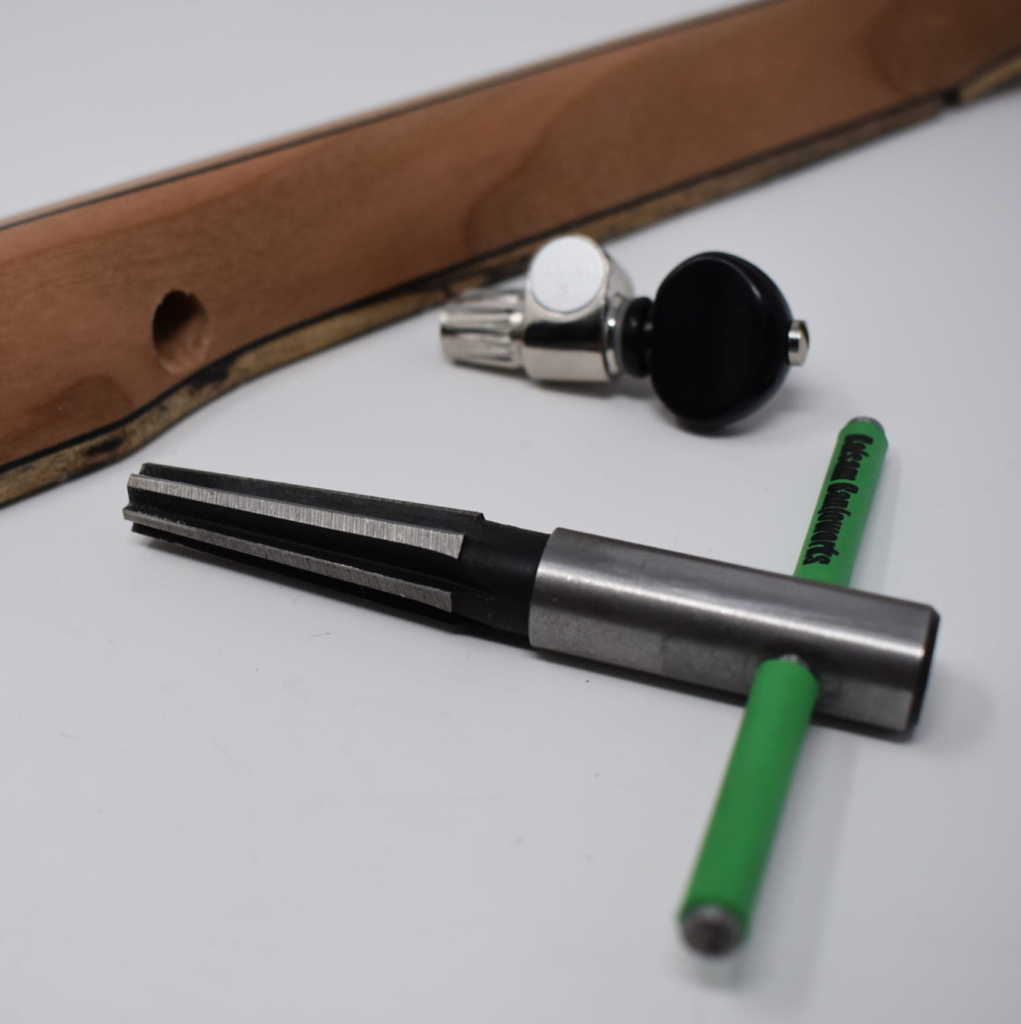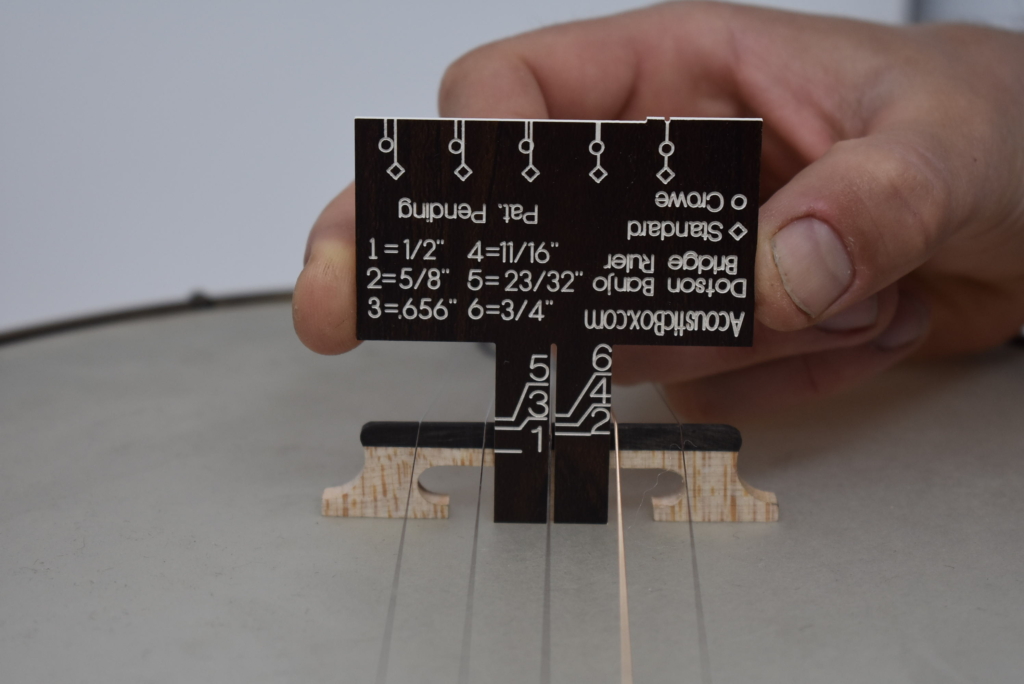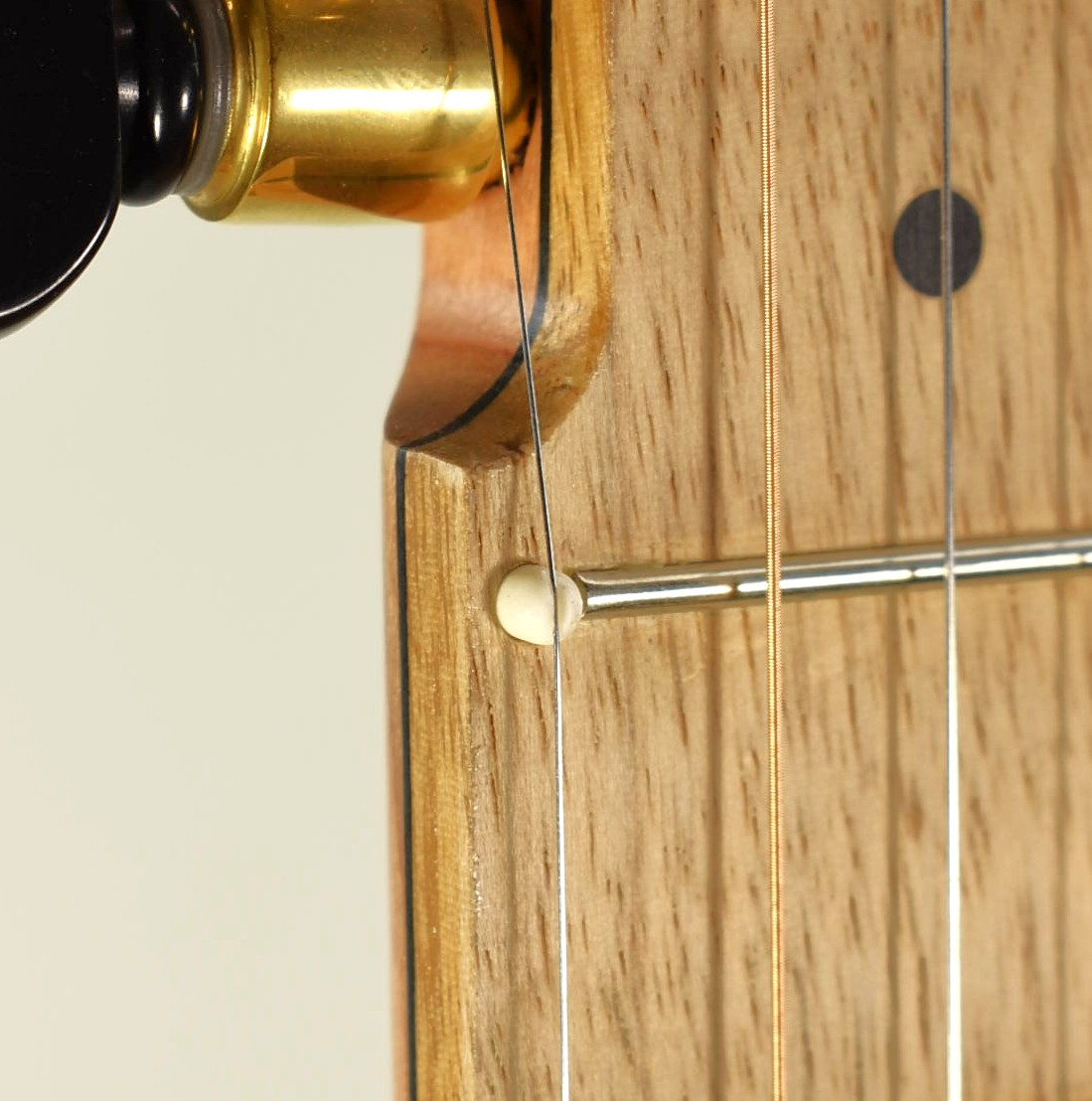
Written by: Patrick David Sawyer
When it comes to banjo craftsmanship, even the smallest details can have a big impact on tone, intonation, and playability. One such detail is the banjo pip—a tiny but crucial component that determines how the fifth string functions.
While some banjo manufacturers treat pip placement as a minor concern, Pisgah Banjos has taken a more precise approach by ensuring that the pip is perfectly in line with the fifth fret. But why does this matter, and how does it improve the instrument? Let’s take a closer look.
What is a Banjo Pip?
The banjo pip is a small rounded nut typically made out of bone or other hard material that holds the fifth string in place as it transitions from the fretboard to the tuning peg. Unlike the other strings, which extend from the tailpiece to the nut, the fifth string starts at the top dead center of the fifth fret, making the pip essential in defining its starting point.
Though small, the pip’s placement directly affects intonation, string height, and overall playability.
Why Pip Placement is Crucial
Accurate Intonation
Intonation ensures that notes sound in tune across the entire fretboard. If the pip is misaligned, the fifth string can sound sharp or flat, throwing off the instrument’s harmonic balance.
Proper String Height and Playability
If the pip is too high, fretting the fifth string down can feel stiff and cause the note to be too sharp. If it’s too low, the string may buzz against the frets and sound “tinny”. Correct placement ensures smooth playability and prevents unwanted buzzing.
Craftsmanship and Aesthetic Quality
A misplaced pip—especially one set too far behind the fifth fret—is often a sign of cost-cutting manufacturing techniques. While it may appear functional, it compromises precision and tonal integrity.
Why Pisgah Banjos Aligns the Pip with the Fifth Fret
Pisgah Banjos, known for their high-quality handcrafted instruments, follows a more precise approach to pip placement. Instead of positioning the pip way behind the fifth fret—an issue seen in many mass-produced banjos—Pisgah ensures that the pip is perfectly in line with the fifth fret. This means the fifth string makes contact exactly where it should, preventing intonation issues caused by a misplaced pip.
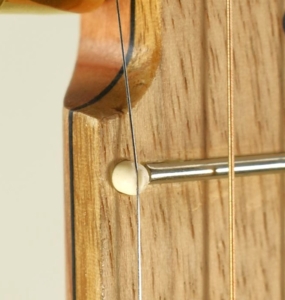
By aligning the pip with the fret rather than setting it behind, Pisgah Banjos offers several advantages:
- Consistent Intonation – When the pip sits directly in line with the fifth fret, the string’s vibrating length remains accurate, ensuring the open fifth string plays in tune.
- Optimal String Height – The alignment and use of a pip helps maintain the correct string action, reducing unnecessary tension and preventing buzzing.
- Enhanced Playability – Because the fifth string starts exactly at the fifth fret, it behaves more predictably when capoed or fretted, maintaining intonation down the length of the string.
By implementing this design across all their models, Pisgah Banjos maintains a level of precision that ensures each instrument sounds and plays as intended. While some manufacturers prioritize easier assembly by setting the pip behind the fret, Pisgah’s method reflects their commitment to tonal accuracy and craftsmanship.
Examples of cheaper less quality alternatives
RR Spike method:
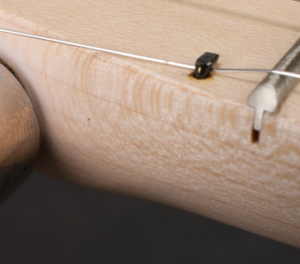
Some banjo manufactures opt for a railroad spike instead of a traditional pip as a functional way to cut corners. In this setup, a small metal spike—originally designed for model railroads—is installed behind the fifth fret, and the string is hooked underneath it.
This approach offers a practical and cost-effective solution, particularly for budget-friendly banjos however, it does come with some trade-offs:
- Consistent upward string pressure on the spike can eventually cause it to pop out. These model train spikes where not designed to have constant upward pressure trying to pull them out of a hole.
- With this method it makes the string height too low and not the same as the other strings causing issues with intonation, and making the tone more “tinny”.
- While functional, this method is often seen on more affordable banjos rather than high-end handcrafted models.
Pip placed too far behind fifth string example:
The below picture is a great example of a pip too far behind the fifth fret. This will no doubt have an impact on intonation when the fifth string is fretted. In addition, this pip is not rounded on top which creates more surface area for the fifth string to buzz. A rounded pip is also more aesthetically pleasing.
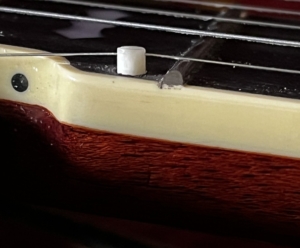
The argument for this sort of placement far behind the fifth fret is that “no one ever frets the fifth string so it doesn’t matter”. This couldn’t be further from the truth! Many banjoists and performers fret the fifth string all the time and having this pip in the wrong place really limits the instrument and prevents it from preforming at it’s highest potential. Why would a manufacturer put this sort of limit on their instrument?
Pip placed just behind the fifth fret:
The below picture is a suitable alternative to placing the pip in line with the fret. Even though having the pip just behind the fifth can still cause intonation issues, it at least minimizes the intonation issue and makes the fifth string the same height as all the others. This is acceptable in the boutique banjo making world especially if a maker doesn’t have the equipment to make pocketed fret slots or blind bound fretboards.
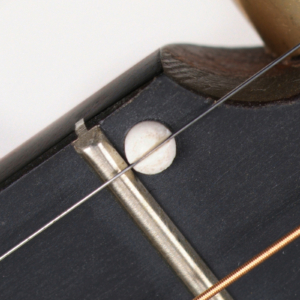
Where to Buy a Banjo Pip
For those interested in purchasing a high-quality banjo pip, Balsam Banjoworks offers a 5th String Pip made from bone. This small, cylindrical component measures 1/4″ in height and 1/8″ in diameter, making it suitable for most banjo setups. You can find more details and purchase options on their website:
Buy a 5th String Pip at Balsam Banjoworks
Final Thoughts: A Small Detail with a Big Impact
It’s easy to overlook the banjo pip, but its placement directly affects intonation, playability, and tonal accuracy. While some manufacturers prioritize ease of production, Pisgah Banjos takes a more refined approach, ensuring that the fifth string always rests at the correct starting point—aligned with the fifth fret.
For players who value tuning precision, smooth playability, and meticulous craftsmanship, this seemingly minor detail makes a significant difference.
The next time you pick up a banjo, take a moment to check the pip placement—it’s a subtle yet telling sign of the instrument’s overall quality and design philosophy.
Disclaimer:
Please note that the information expressed in this post is based on personal opinions from the author, informed by years of hard work and experience. While the insights shared are rooted in real-world practice, they reflect individual perspectives and may not apply universally. Always consider multiple viewpoints and consult professionals in the industry when necessary.


